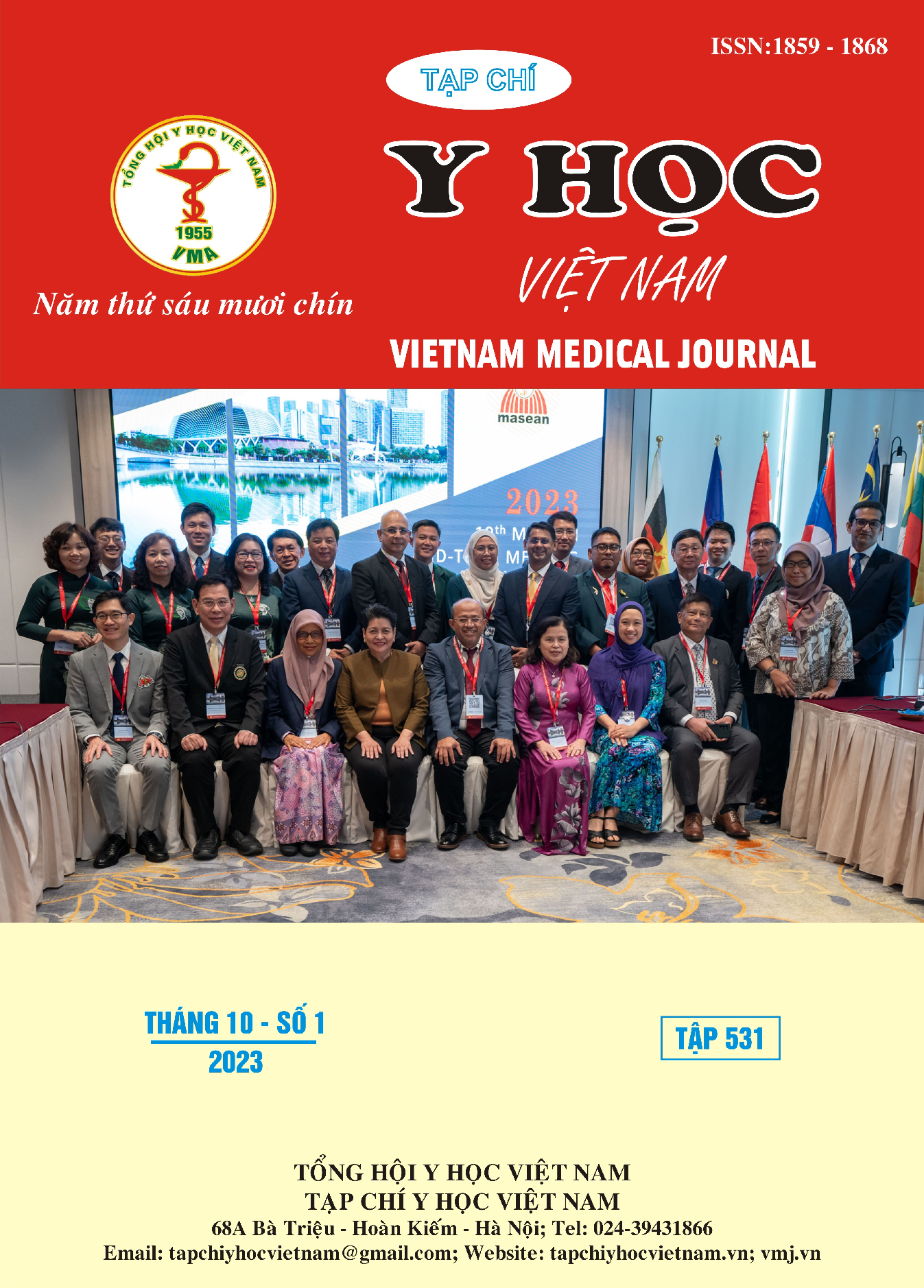SURGICAL TREATMENT OF CRANIOPHARYNGIOMA BY THE KEYHOLE EYEBROW APPROACH
Main Article Content
Abstract
Objective: To evaluate the surgical results of craniopharyngioma by keyhole eyebrow approach. Methods: Retrospective, descriptive study of a series of clinical cases of craniopharyngioma operated at Viet Duc Friendship Hospital from October 2020 to June 2022. Results: Of our 15 patients, there were 9 male patients and 6 female patients, with a mean age of 38 (ages 14 – 81). Most of the patients had clinical manifestations of visual acuity loss in 86.7% (13 patients), hemianopia 26.7% (4 patients), hypopituitarism 33.3% (5 patients) and 2 hydrocephalus patients. Tumor location was mainly located in the suprasellar 66.7% (Sami type II) and third ventricle 33.3% (Sami type III and IV). The mean tumor size was 29.2mm. There were 66.7% cases of total tumor resection, 20% removal of the majority (>90%) and 2 cases of partial resection. Visual acuity improved in 10 patients (76.9%), 6 patients with hypopituitarism and 3 patients with permanent diabetes insipidus. There were no deaths or major complications after surgery, with a mean Karnofsky score above 80 at 6 months. Conclusions: The keyhole eyebrow approach is characterized by minimally invasiveness and good esthetic results. In our experience, craniopharyngioma located in the suprapubic region and third ventricle can be safely excised through the keyhole eyebrow approach.
Article Details
Keywords
Craniopharyngioma, keyhole eyebrow craniotomy, third ventricle tumor, suprasellar tumor
References
2. Kumamoto Brain Tumor Group, Makino K, Nakamura H, Yano S, Kuratsu J ichi. Population-based epidemiological study of primary intracranial tumors in childhood. Childs Nerv Syst. 2010; 26(8):1029-1034. doi:10.1007/s00381-010-1126-x
3. Hoffman HJ. Surgical Management of Craniopharyngioma. Pediatr Neurosurg. 1994; 21(1):44-49. doi:10.1159/000120861
4. Samii M, Tatagiba M. Surgical management of craniopharyngiomas: a review. Neurol Med Chir (Tokyo).1997;37(2):141-149.doi: 10.2176/ nmc.37.141
5. Jallo GI, Bognár L. Eyebrow Surgery: The Supraciliary Craniotomy: Technical Note. Oper Neurosurg. 2006;59(suppl_1):ONS-E157-ONS-E158. doi:10.1227/01.NEU.0000220045.23743.80
6. Cheng CM, Noguchi A, Dogan A, et al. Quantitative verification of the keyhole concept: a comparison of area of exposure in the parasellar region via supraorbital keyhole, frontotemporal pterional, and supraorbital approaches: Laboratory investigation. J Neurosurg. 2013; 118(2):264-269. doi:10.3171/2012.9.JNS09186
7. Reisch R, Perneczky A. Ten-year Experience with the Supraorbital Subfrontal Approach through an Eyebrow Skin Incision. Oper Neurosurg. 2005;57(suppl_4):ONS-242-ONS-255. doi:10.1227/01.NEU.0000178353.42777.2C
8. Liu JK, Sevak IA, Carmel PW, Eloy JA. Microscopic versus endoscopic approaches for craniopharyngiomas: choosing the optimal surgical corridor for maximizing extent of resection and complication avoidance using a personalized, tailored approach. Neurosurg Focus. 2016;41(6):E5. doi:10.3171/2016.9.FOCUS16284


